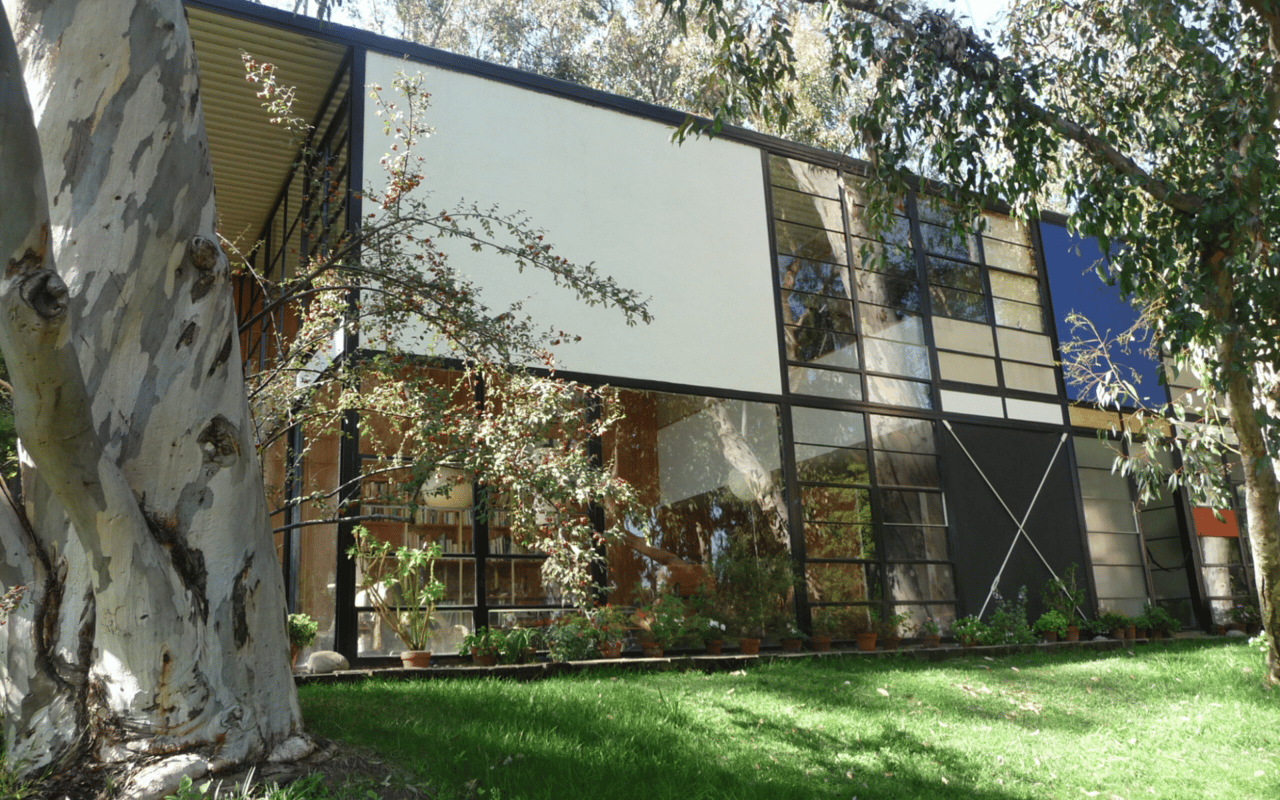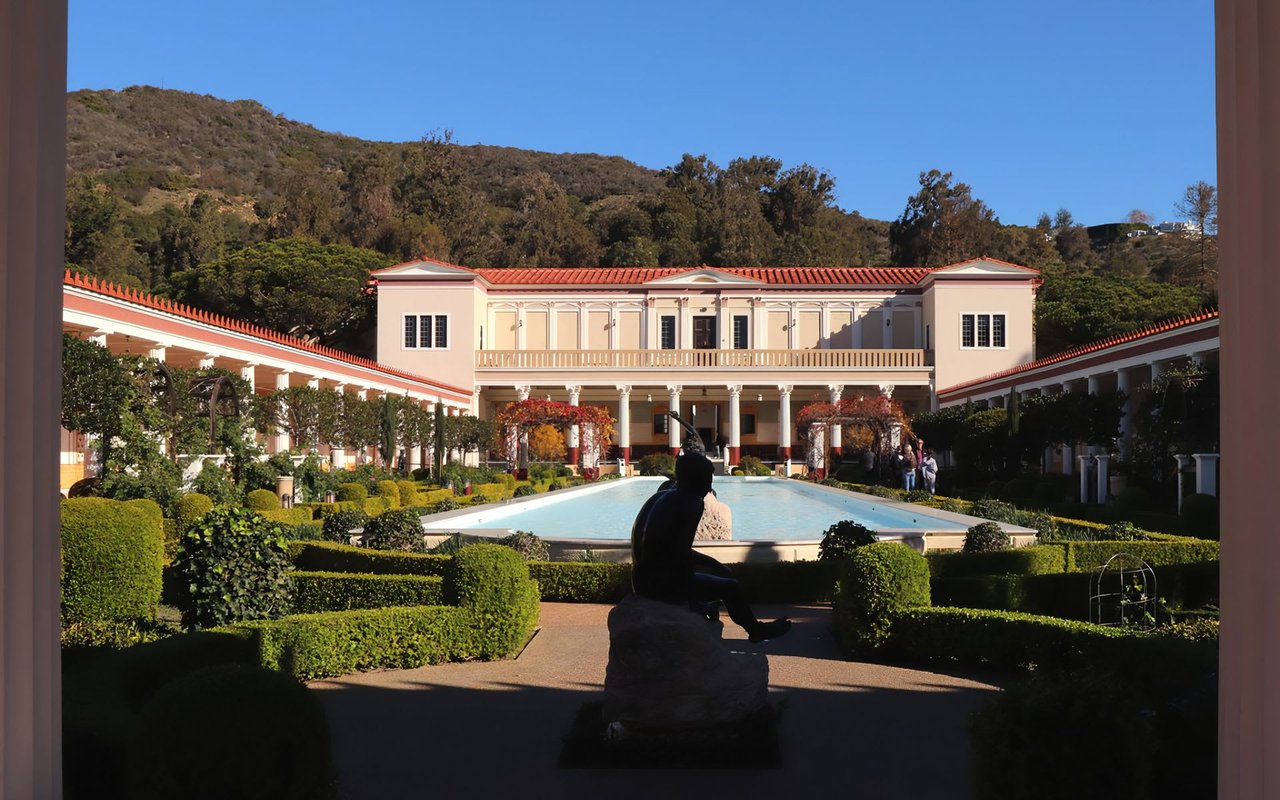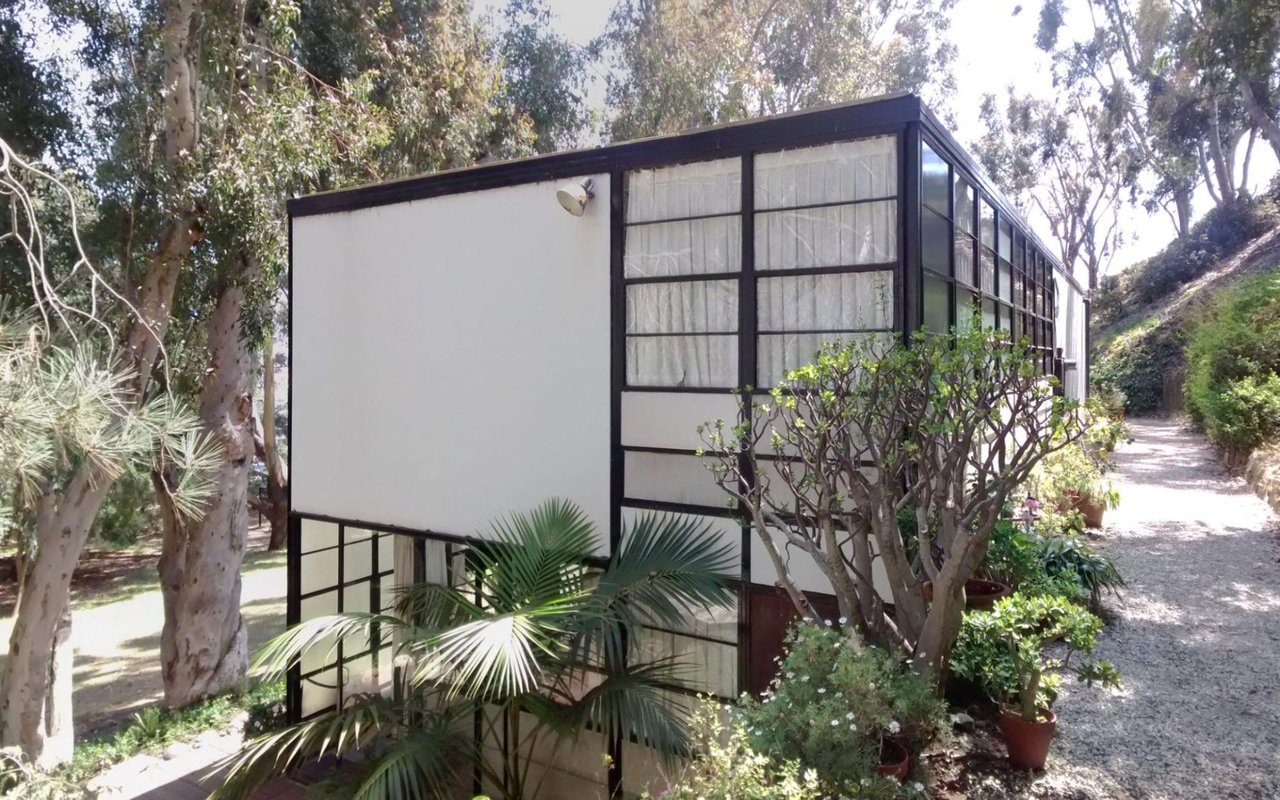The Entenza House, located in the lush hills of Pacific Palisades in Southern California, is the ninth in a series of notable Case Study Houses constructed between 1945 and 1962. This home features an expansive, open-plan living space that seamlessly merges with the outdoor environment through floor-to-ceiling glass doors, creating a harmonious blend of interior and exterior spaces. With its Modernist design, the Entenza House embodies the post-war vision of accessible, affordable, and stylish living.
Initiated by John Entenza, the editor of Arts and Architecture magazine, the Case Study House Program aimed to showcase how modular steel construction could create cost-effective homes in a society recovering from World War II. The homes were designed to reflect a new way of life — more relaxed, adaptable, and more in tune with the outdoors—using materials like steel, glass, and concrete to create open, flexible spaces.
The Case Study Houses Program
The Case Study Houses Program, led by John Entenza from 1945 to 1966, featured 36 experimental homes designed to study affordable, easy-to-build housing solutions in the post-war era. The Entenza House, the ninth house in this series, was built between 1945 and 1949. It utilized materials such as concrete, metal, and glass to represent the technological advancements of its time. These materials were chosen for their adaptability and affordability, aligning with the economic needs of a recovering nation.
Added to the National Register of Historic Places in 2013, the Entenza House reflects an era when open concepts and minimalist design were on the rise. Its layout demonstrates how new construction methods could create comfortable, functional living spaces while showcasing architectural innovation.
Added to the National Register of Historic Places in 2013, the Entenza House reflects an era when open concepts and minimalist design were on the rise. Its layout demonstrates how new construction methods could create comfortable, functional living spaces while showcasing architectural innovation.
Unique Layout and Design
The Entenza House offers expansive views of the sea through its large square structure, which includes all the home’s key features, such as a garage. Like many other Case Study Houses, the home interacts closely with its natural surroundings, creating extended outdoor spaces for relaxation and entertainment. The heart of the house is a large, central living area that connects to the kitchen, entryway, and bedrooms, providing a cohesive flow throughout.
A standout feature of this home is its spacious, open-plan living room, which occupies nearly half of its interior. Designed to serve as a versatile gathering space, it can accommodate a large party of up to forty people or a small, intimate group. A substantial fireplace divides the area, providing a grand and cozy space for various occasions.
A standout feature of this home is its spacious, open-plan living room, which occupies nearly half of its interior. Designed to serve as a versatile gathering space, it can accommodate a large party of up to forty people or a small, intimate group. A substantial fireplace divides the area, providing a grand and cozy space for various occasions.
Interior Features and Flow
The living room includes a sunken area framed by two broad steps that can serve as informal seating. One side of the sunken space features a built-in curved couch, while a double-sided fireplace offers a partial divider that still allows views of the outdoors. These design elements create a flexible living environment that is both inviting and functional.
Contrasting with the expansive living areas, the study room is compact and devoid of windows, designed to promote focus and minimize distractions. Additional private spaces, such as the bedrooms, are intentionally smaller and sparsely furnished, enhancing the home's minimalist appeal. Several terraces also capitalize on the California sunshine, providing outdoor spaces for relaxation, including a private terrace off the bathroom and a breakfast nook.
Contrasting with the expansive living areas, the study room is compact and devoid of windows, designed to promote focus and minimize distractions. Additional private spaces, such as the bedrooms, are intentionally smaller and sparsely furnished, enhancing the home's minimalist appeal. Several terraces also capitalize on the California sunshine, providing outdoor spaces for relaxation, including a private terrace off the bathroom and a breakfast nook.
Connection with Case Study House #8
Two homes were built on a shared 1½ acre lot under the Case Study House Program: Entenza’s House (#9) and the Eames House (#8). Both houses utilized similar structural components, including four-inch H-columns and twelve-inch open web joists. This structural system maximized space within a minimal frame, with the roof comprising a simple concrete slab. The shared materials and design approach created a unified aesthetic while maintaining each home's identity.
Legacy and Current Status
Entenza occupied his Case Study House for only five years after its completion in 1949. Over time, it has been sold to several different owners, each modifying the original design. While the neighboring Eames House now serves as the headquarters for the Eames Foundation and is open to the public, the Entenza House remains a private residence.
Despite the changes, Case Study House #9 continues to reflect the innovative spirit and architectural principles that made the Case Study Houses a milestone in American residential architecture. Though still intact today, this home offers a unique look at mid-century modernism, capturing a moment when new materials and design concepts began to shape the American home.
Despite the changes, Case Study House #9 continues to reflect the innovative spirit and architectural principles that made the Case Study Houses a milestone in American residential architecture. Though still intact today, this home offers a unique look at mid-century modernism, capturing a moment when new materials and design concepts began to shape the American home.
About Bill and Daniel Moss
Choose Bill and Daniel Moss, lifetime Malibu residents and expert real estate professionals, to help you achieve your real estate goals. Growing up in Malibu Bill and Daniel know every corner of this incredible city. With over 45 years of combined experience, Bill and Daniel bring a wealth of knowledge about the Malibu real estate market and valuable insights into building and remodeling in the area. Let Bill and Daniel’s passion for Malibu architecture and expertise guide you in finding the perfect property to fit your lifestyle.
Reach out to Bill and Daniel Moss today and start your journey toward your dream home in Malibu.
Reach out to Bill and Daniel Moss today and start your journey toward your dream home in Malibu.





